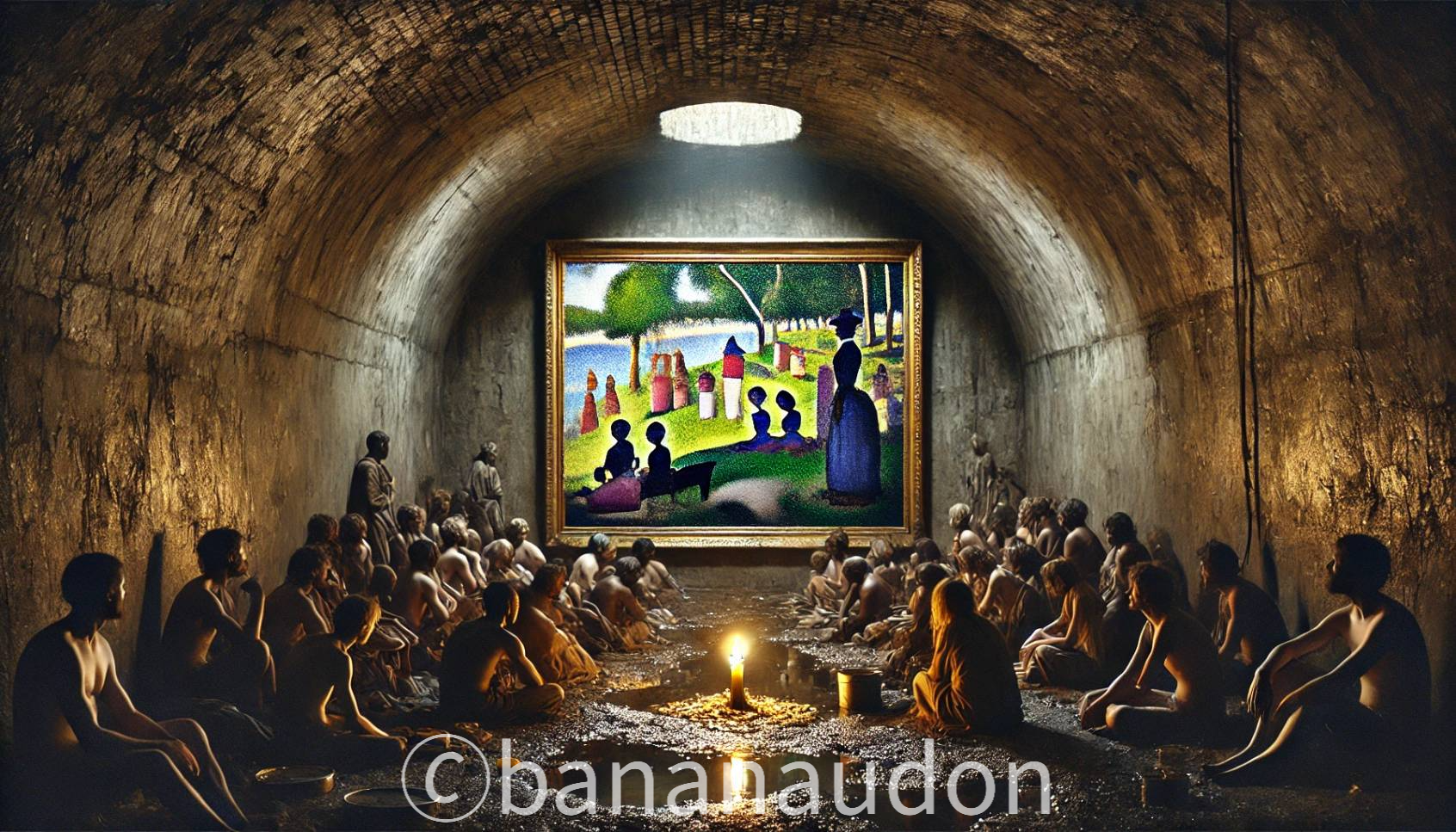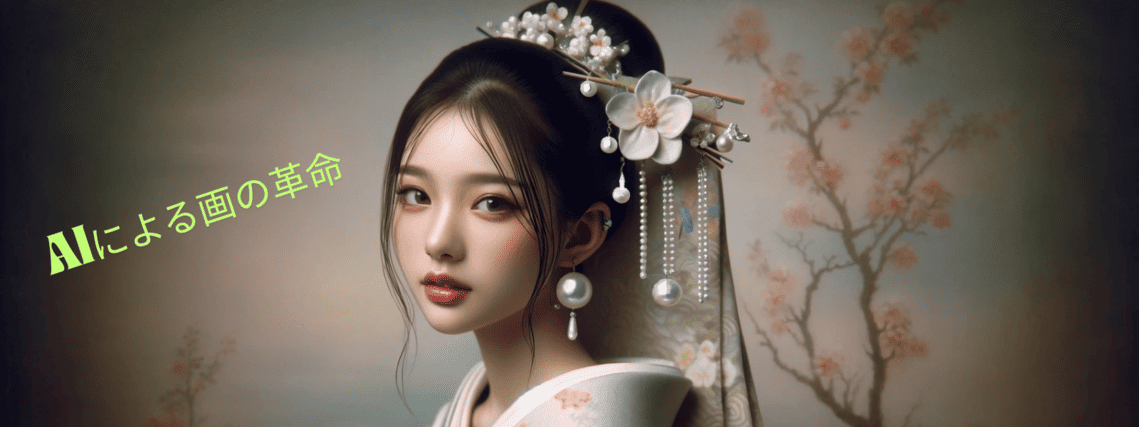A Dystopian Reinterpretation of *A Sunday Afternoon on the Island of La Grande Jatte
2025.03.20投稿
広告

What happens when Georges Seurat’s masterpiece *A Sunday Afternoon on the Island of La Grande Jatte* (1884–1886) is reimagined as a sacred artefact in a dystopian underground world?
This striking reinterpretation challenges the meaning of art, utopia, and human perception of the past. In this article, we will analyse the original painting’s historical context and explore the significance of its transformation.
First Impressions of the Reinterpreted Artwork
Unlike the idyllic outdoor setting of Seurat’s masterpiece, this reimagined artwork relocates the scene to a dark, enclosed underground world.
Instead of well-dressed bourgeois figures enjoying a sunlit afternoon, half-clothed, emaciated individuals huddle together in dim candlelight, gazing at the painting as if it were a lost relic of a forgotten civilisation.
The damp walls, mud-covered floor, and flickering light create an eerie, almost religious atmosphere, where *A Sunday Afternoon on the Island of La Grande Jatte* is no longer just a painting—it is a symbol of a utopia that has long since disappeared.
The stark contrast between the vibrant, orderly composition of Seurat’s original and the desolate, chaotic underground setting intensifies the impact of the reinterpretation.
Understanding Seurat’s *A Sunday Afternoon on the Island of La Grande Jatte*
Overview of the Original Artwork
Title: *A Sunday Afternoon on the Island of La Grande Jatte*
Artist: Georges Seurat
Year: 1884–1886
Technique: Pointillism (Divisionism)
Location: Art Institute of Chicago
Historical Context
Seurat’s *A Sunday Afternoon on the Island of La Grande Jatte* is one of the most iconic works of the Neo-Impressionist movement. It depicts Parisians leisurely enjoying their day by the Seine River, reflecting the increasing urbanisation and structured leisure time of the middle and upper classes.
Unlike the free and expressive brushstrokes of the Impressionists, Seurat’s approach was methodical, employing scientific colour theory and pointillism to create a meticulously organised scene.
Despite its serene atmosphere, the painting carries an underlying sense of stillness and rigidity, suggesting a more artificial and stratified social order.
Key Aspects of the Reinterpretation
1. Transformation of Space
Where the original painting celebrated open air, natural light, and an expansive riverside setting, this reinterpretation confines the scene to an underground, dystopian world.
The figures no longer engage in leisure but instead worship the painting as a lost paradise. The juxtaposition between the painting’s former elegance and its current ruinous setting is profoundly symbolic.
2. Colour Contrast
Seurat’s original work is defined by its masterful use of colour theory, where bright, complementary hues enhance the vibrancy of the scene.
In this reinterpretation, the artwork itself remains vividly coloured, but the surrounding world is stripped of saturation, dominated by muted greys and browns.
This contrast intensifies the idea that the painting represents a distant, idealised past in a world that has lost all sense of beauty and order.
3. Shift in Theme
The original painting depicted the structured yet peaceful leisure of 19th-century bourgeois life. In contrast, this reinterpretation transforms it into a relic of lost civilisation, worshipped by those who remain.
The idyllic past is no longer attainable—it exists only as an object of reverence in a bleak and decaying future.
Critical Analysis
This reinterpretation presents a powerful critique of contemporary society, addressing themes of nostalgia, cultural decay, and economic disparity.
“The Fall of Civilisation and the Worship of the Past”
The contrast between the elegant bourgeois leisure of the original and the desperate reverence of the underground figures suggests a future where past affluence has become a myth.
“The Changing Role of Art”
In this version, *A Sunday Afternoon on the Island of La Grande Jatte* is no longer a mere artwork—it is a beacon of lost ideals. This raises the question: Does art simply reflect society, or does it offer a timeless sense of hope?
“Economic and Social Disparities”
The transformation from a leisurely riverside to a desolate underground chamber suggests a critique of growing social inequalities. While some enjoy luxury, others can only dream of what once was.
Conclusion
This reinterpretation of *A Sunday Afternoon on the Island of La Grande Jatte* is a thought-provoking commentary on the fragility of civilisation and the way art’s meaning evolves with time.
Through the stark contrast between light and darkness, past and future, idealism and dystopia, the artwork forces viewers to question the role of art in times of social decline.
What remains when a civilisation collapses? What do people cling to when everything else is lost?
By reinterpreting Seurat’s masterpiece, this artwork invites us to reflect on these fundamental questions about human nature, history, and the fate of art itself.
